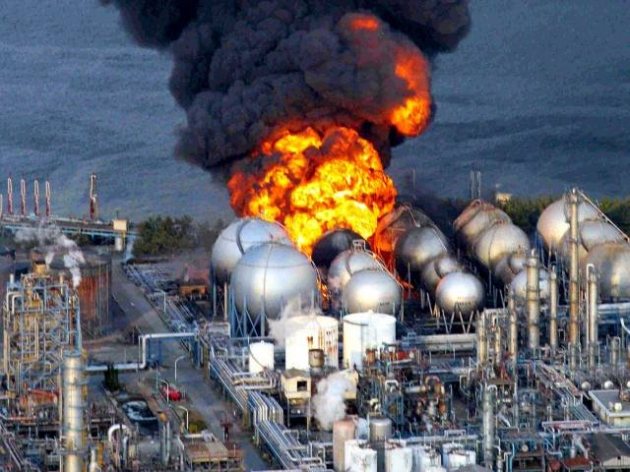Cancer rates at Fukushima worse than Chernobyl
11/11/2015 / By Greg White

The Fukushima Daiichi meltdown was the worst nuclear catastrophe since Chernobyl. While the Chernobyl disaster was worse than the Fukushima disaster in several respects, recent evidence suggests cancer rates from the latter debacle trump the former.
Just this month, the Japanese government made its first admission that radiation exposure caused a worker to develop cancer, following decontamination work after the disaster. The man was in his forties and had been working at the power plant for a little over a year. He was exposed to 19.8 millisieverts of radiation, which was four times the Japanese exposure limit. The man has been diagnosed with leukemia.[1]
This isn’t the first time someone developed cancer as a consequence of working at the site of the catastrophe. The former Fukushima manager Masao Yoshida was diagnosed with esophageal cancer shortly after the disaster. He died in 2013. Nevertheless, the Tokyo Electric Power Company (TEPCO), the company in charge of the power plant, refused to acknowledge that Yoshida had developed cancer from radiation exposure. They argued the disease developed too rapidly to be a product of radiation.[1]
Three other Fukushima workers have been diagnosed with cancer. Their cases are still pending review.
The Fukushima disaster was a consequence of a tsunami that hit and destroyed three nuclear reactors and severely damaged a fourth in 2011. A hydrogen explosion released a deadly plume of radiation into the air and toxic waste from the power plant continues to spill into the sea.
Cancer rates spike in Fukushima Prefecture
This first official cancer diagnosis is likely to be one of many within the days to come. A recent scientific study found a 30-fold excess of thyroid cancer among over 400,000 young people below the age of 18 at the Fukushima Prefecture.
The power of the elements: Discover Colloidal Silver Mouthwash with quality, natural ingredients like Sangre de Drago sap, black walnut hulls, menthol crystals and more. Zero artificial sweeteners, colors or alcohol. Learn more at the Health Ranger Store and help support this news site.
“The highest incidence rate ratio, using a latency period of 4 years, was observed in the central middle district of the prefecture compared with the Japanese annual incidence,” said the researchers.[1]
In the first screening among 298,577 young people four years after the disaster, thyroid cancer occurred 50 times more among those who lived in irradiated regions than those who didn’t. In the second screening conducted in April 2014, 106,068 young people living in less irradiated regions were assessed. Results show that cancer was twelve times more common than the general population.
The authors of the paper went on to note that thyroid cancer rates at the Fukushima Prefecture are higher than at the Chernobyl disaster in 1986, and that many more cancer cases will likely develop.
“In conclusion, among those ages 18 years and younger in 2011 in Fukushima Prefecture, approximately 30-fold excesses in external comparisons and variability in internal comparisons on thyroid cancer detection were observed in Fukushima Prefecture within as few as 4 years after the Fukushima power plant accident. The result was unlikely to be fully explained by the screening effect.[1]
“In Chernobyl, excesses of thyroid cancer became more remarkable 4 or 5 years after the accident in Belarus and Ukraine, so the observed excess alerts us to prepare for more potential cases within a few years.”[1]
More radiation released than previously believed
To make matters worse, scientific studies of the Chernobyl disaster have found that thyroid cancer rates don’t decrease over time. There is no noteworthy decrease in thyroid cancer rates for people exposed to certain radioactive isotopes. Given the recent spike in cancer thyroid rates, however, the researchers believe radiation released from the Fukushima site may have been greater than previously believed.
“Furthermore, we could infer a possibility that exposure doses for residents were higher than the official report or the dose estimation by the World Health Organization, because the number of thyroid cancer cases grew faster than predicted in the World Health Organization’s health assessment report,” the researchers wrote.[1]
Sources:
[1] CounterPunch.org
Tagged Under: Chernobyl disaster, Fukushima Prefecture, thyroid cancer




















